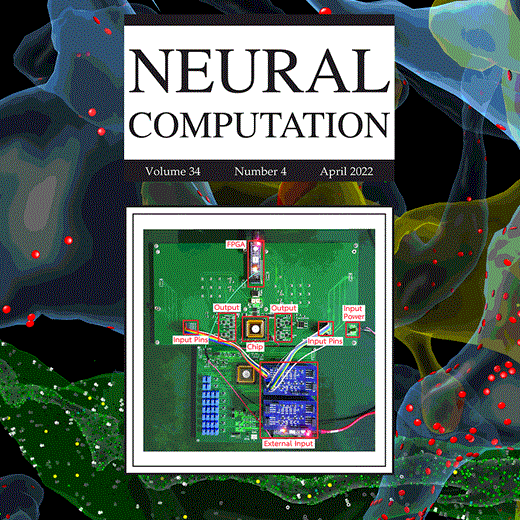
DOI: 10.1162/neco_a_01481
Abstract:
Quantum dynamical systems are capable of powerful computation but are hard to emulate on digital computers. We show that four novel analog circuit parts can emulate the phase-coherent unitary dynamics of such systems. These four parts are: a Planck capacitance analogous to a neuronal membrane capacitance; a quantum admittance element, together with the Planck capacitance, analogous to a neuronal quadrature oscillator; a quantum transadmittance element analogous to a complex neuronal synapse; and a quantum transadmittance mixer element analogous to a complex neuronal synapse with resonant modulation. These parts may be emulated classically, with paired real-value voltages on paired Planck capacitances corresponding to the real and imaginary portions of a probability amplitude; and appropriate paired real-value currents onto these Planck capacitances corresponding to diagonal (admittance), off-diagonal (transadmittance), or controlled off-diagonal (transadmittance mixer) Hamiltonian energy terms. The superposition of 2nn simultaneously phase-coherent and symmetric probability-voltage amplitudes with O(n)O(n) of these parts, in a tensor-product architecture enables analog emulation of the quantum Fourier transform (QFT). Implementation of our circuits on an analog integrated circuit in a 0.18 μμm process yield experimental results consistent with mathematical theory and computer simulations for emulations of NMR, Josephson junction, and QFT dynamics. Our results suggest that linear oscillatory neuronal networks with pairs of complex subthreshold/nonspiking sine and cosine neurons that are coupled together via complex synapses to other such complex neurons can architect quantum-inspired computation with classical analog circuits. Thus, an analog-circuit mapping between quantum and neural computation, both of which exploit analog computation for powerful operation, can enable future synergies between these fields.
